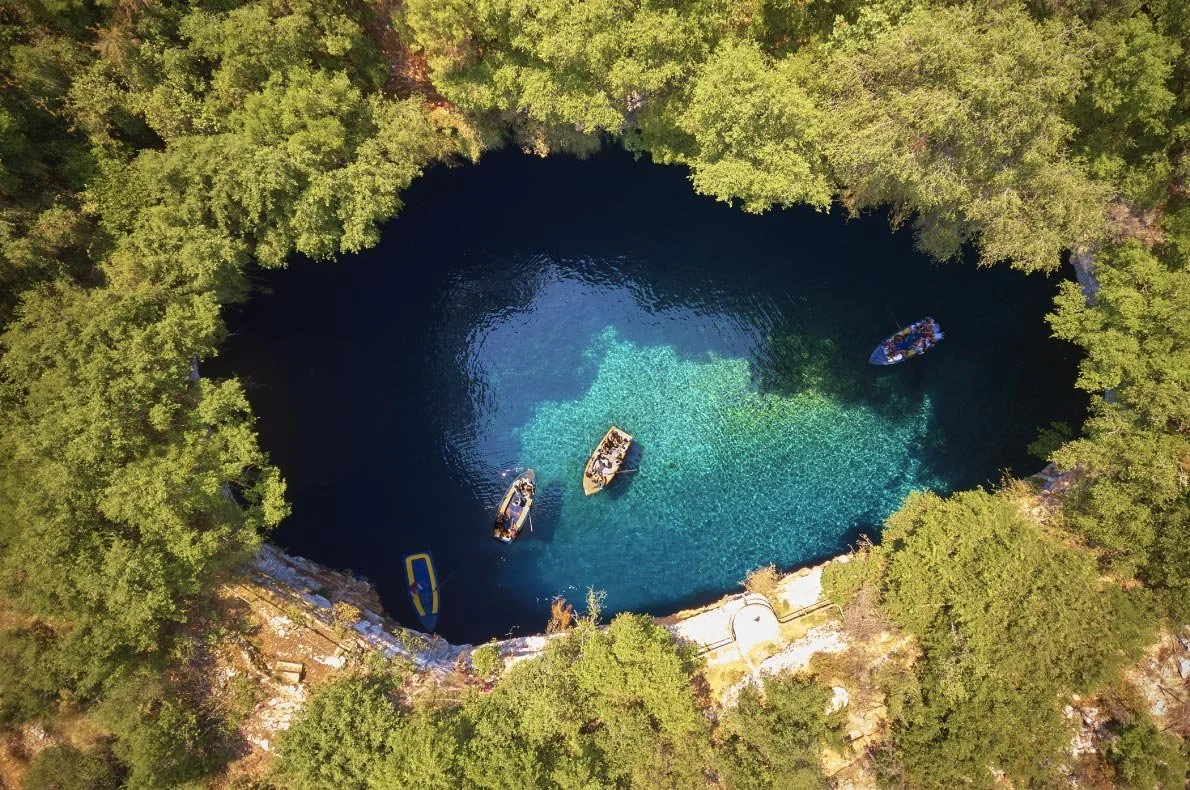Greece’s natural beauty and history extends far beyond the well-traveled islands of Santorini and Mykonos.
The isolated Vlacherna Monastery off the coast of Corfu.. Daniel Solabarrieta. CC BY-SA 2.0.
Though Greece has 6,000 islands and islets, only 227 of them are inhabited. Many are famous for picturesque beaches and nightclubs that welcome more than 34 million tourists every year. It is no surprise that the country is a favorite for travelers looking to explore the natural beauty of the Mediterranean, to learn more about the ancient civilization that once called the islands home or just to escape the monotony of everyday life. However, there is much more to the country than its white stucco buildings and tzatziki including cliffside monasteries, man-made lakes, and hidden fishing villages just waiting to be discovered.
1. Monastery Republic of Mount Athos, Chalcidice
The holy monastery at Mount Athos. Maite Elorza. CC BY-NC-SA 2.0.
Located on the northern Greek peninsula of Chalcidice, Mount Athos is home to twenty ancient monasteries that date back to Byzantine times. Known to locals as the “Holy Mountain,” the recognized heritage site is off limits to women and children, but is home to approximately 1,400 monks. Its religious significance stems from legends that the rock face was once the location of a sanctuary of Zeus, but the mountain was also subjected to a number of attacks and attempted invasions over the years. The mountainous state officially became an autonomous region on October 3 ,1993and legally lies under the religious jurisdiction of the Patriarch of the Greek Orthodox Church from Constantinople.
2. Lake Doxa, Corinthia
Artificial Lake Doxa in western Corinthia. Ava Babili. CC BY-NC-ND 2.0.
Surrounded by fir-tree covered mountains, the man-made Lake Doxa was built about fifteen years ago to help counter the high water levels. These tides also caused the Monastery of Agios to relocate at the center of the lake, and now appears as though it is floating on the water’s surface. The lake is in the village of Archaia Feneos which is located at the base of Mount Cyllene, the supposed birthplace of the god Hermes. According to popular Greek myth, there is also a subterranean canal underneath the lake that was dug by Hercules as one of his Twelve Labors.
3. Klima Fishing Village, Milos
The colorful fishing village of Klima. Ioana. CC BY-SA 2.0.
Located on the volcanic island of Milos, the tiny fishing village of Klima has an extensive history that stretches all the way back to around 3,000 BC. The island was occupied by Athenians, Macedonians and Romans over the next few centuries, each leaving their own architectural mark. Visitors can still see remnants of aqueducts, catacombs, theaters and even ancient gymnasiums. After its eventual liberation in the Greek Revolution, the population of Milos began focusing on agriculture and fishing, leveraging the unique volcanic soil and rocks to build garages and houses (known as “syrmatas”) that would protect them from bad weather. Many of the fishermen painted their doors and balconies with bright colors, giving the village its picturesque facade.
4. Voutoumi Beach, Antipaxos
The isolated Voutoumi beach on Antipaxos Island. Ari Bakker. CC BY 2.0.
As the smallest of the Ionian Islands, Antipaxos’ beaches are popular among locals from the neighboring islands of Paxi and Corfu but are relatively unknown to foreign tourists. Voutoumi beach is the largest of these and has some of the clearest waters in the Greek archipelago. It is also the preferred destination for private yachts because of its isolated location in a hidden cove on the north eastern side of the island. In fact, the pebble beach is so secluded that there aren’t any shops aside from a local tavern on a nearby hill that serves traditional Greek snacks. There are also a number of smaller coves that are easily reachable from Voutoumi by boat.
5. Melissani Cave, Kefalonia Island
An overhead view of the Melissani Cave. jordeangjelovik. CC BY 2.0.
Kefalonia is conversely the largest of the Ionian Islands and is home to an underground grotto located 20 meters (roughly 60 feet) below the surface of the Earth. The Melissani Cave is made up of two rooms, one of which is bright and sun-lit while the other is fully roofed with dark stone stalactites. The chambers are connected by a pool of water that runs about 30 meters (about 90 feet) deep. Legend has it that the cave is named after the nymph Melissanthi who perished in these waters after being rejected by the satyr god Pan. Excavations carried out in the 1950s and 1960s discovered small terracotta statues in the cave depicting the myth and commemorating her unrequited love.
6. Ancient Greek Ruins, Delos
Ruins of the House of Cleopatra on the island of Delos. Bgag. CC BY-SA 2.0.
The island of Delos was once the religious epicenter of the Cyclades. It is now home to a large collection of archaeological ruins that commemorate Artemis and Apollo, the Olympian twins that are believed to have been born on the island. There are also beautifully preserved remnants of civilization from the archaic, classical and Hellenic periods in the form of ceramics, statues and mosaics. En route to the island’s highest point at the summit of Mount Cynthe is the ancient theater district and temples dedicated to the Egyptian deities Isis and Serapis. In fact, many foreign gods have dedicated shrines on Delos because it was a crucial trading port and hosted many sailors from overseas.
Tanaya Vohra
Tanaya is an undergraduate student pursuing a major in Public Health at the University of Chicago. She's lived in Asia, Europe and North America and wants to share her love of travel and exploring new cultures through her writing.








